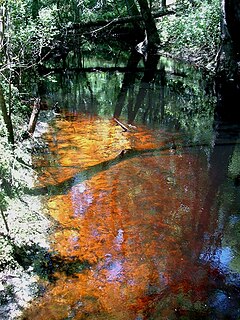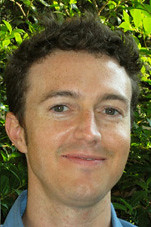I found some interesting youtube videos of South American fish in their natural habitat.
Here's one of Collecting Neon Tetra in Venezuela.
And another of Collecting Otocinclus affinis in Venzuela.
Also, German Blue Ram Cichlids in Venezuela.
And Corydoras in the Amazon.
Tuesday, April 13, 2010
Monday, April 12, 2010
The Initial Setup
Time to get down to the nitty-gritty. Here's what I'm starting with:
Equipment
15 gallon glass aquarium
Hagen Glo T5-HO 54W light fixture
AquaClear 20 Power Filter
50W water heater
Black Eco-Complete Plant Substrate (1x 20lbs bag)
Gnarly tree stump
Indian Almond leaf litter (Terminalia catappa)
Plants
Common Amazon Sword (Echinodorus amazonicus)
Pygmy Chain Sword (Echinodorus tenellus)
Vallisneria spiralis
Anacharis
Cabomba
Fish
Pair of German Blue Ram Cichlids (Mikrogeophagus ramirezi)
6 Venezuelan Pygmy Cory (Corydoras habrosus)
4 Rummy-Nose Tetra (Hemigrammus rhodostomus)
Water
~90% RO water, ~10% hard dechlorinated tap water
TDS: ~130ppm
Alk: ~2 dKH
pH: ~7.5
Temp: ~77°F
Equipment
15 gallon glass aquarium
Hagen Glo T5-HO 54W light fixture
AquaClear 20 Power Filter
50W water heater
Black Eco-Complete Plant Substrate (1x 20lbs bag)
Gnarly tree stump
Indian Almond leaf litter (Terminalia catappa)
Plants
Common Amazon Sword (Echinodorus amazonicus)
Pygmy Chain Sword (Echinodorus tenellus)
Vallisneria spiralis
Anacharis
Cabomba
Fish
Pair of German Blue Ram Cichlids (Mikrogeophagus ramirezi)
6 Venezuelan Pygmy Cory (Corydoras habrosus)
4 Rummy-Nose Tetra (Hemigrammus rhodostomus)
Water
~90% RO water, ~10% hard dechlorinated tap water
TDS: ~130ppm
Alk: ~2 dKH
pH: ~7.5
Temp: ~77°F
Fish of the Llanos
Here's a short list of fish native to the Llanos region of Venezuela with a special emphasis on smaller species commonly available in the North American aquarium trade:
German Blue Ram Cichlid (Microgeophagus ramirezi)
Checkerboard cichlid (Dicrossus filamentosus)
Cardinal Tetra (Paracheirodon axelrodi)
Rummy-Nose Tetra (Hemigrammus rhodostomus / bleheri)
Green Neon Tetra (Paracheirodon simulans)
Venezuelan Pygmy cory (Corydoras habrosus)
Bluespotted cory (Corydoras melanistius)
Bandit cory (Corydoras metae)
False Bandit cory (Corydoras melini)
German Blue Ram Cichlid (Microgeophagus ramirezi)
Checkerboard cichlid (Dicrossus filamentosus)
Cardinal Tetra (Paracheirodon axelrodi)
Rummy-Nose Tetra (Hemigrammus rhodostomus / bleheri)
Green Neon Tetra (Paracheirodon simulans)
Venezuelan Pygmy cory (Corydoras habrosus)
Bluespotted cory (Corydoras melanistius)
Bandit cory (Corydoras metae)
False Bandit cory (Corydoras melini)
Substrate & Aquatic Plants
Substrates
The substrates of the Llanos region of the Orinoco basin include various combinations of peat, mud, fine sand, and clay. Colors include black, brown, red, or white. Fallen branches, roots, leaf litter, and palm fronds are common.
Aquatic Plants
Here is a list of commonly found aquatic plants that may be found in the region. I assembled this list using a highly trustworthy source. Yes, that's right, the Internet.
Common Amazon Sword (Echinodorus amazonicus)
Pygmy Chain Sword (Echinodorus tenellus)
Anacharis (Egeria densa)
Pennywort (Hydrocotyle leucocephala)
Pipewort (Eriocaulon sp.)
Variable Leaf Water Hyacinth (Eichhornia diversifolia)
Red Hygrophila (Alternanthera reinecki)
Hornwort (Ceratophyllum submersum)
Water Millfoil (Myriophyllum elatinoides)
Vallisneria spiralis
Eichhornia crassipes
Eichhornia azurea
Pistia stratiotes
Thalia geniculata
Salvinia sp.
Ipomoea sp.
Eleocharis sp.
Cyperus sp.
Cabomba sp.
Ludwigia sp.
Utricularia sp.
Heteranthera sp.
Sagittaria sp.
Note that several of these are likely non-native and/or invasive.
The substrates of the Llanos region of the Orinoco basin include various combinations of peat, mud, fine sand, and clay. Colors include black, brown, red, or white. Fallen branches, roots, leaf litter, and palm fronds are common.
Aquatic Plants
Here is a list of commonly found aquatic plants that may be found in the region. I assembled this list using a highly trustworthy source. Yes, that's right, the Internet.
Common Amazon Sword (Echinodorus amazonicus)
Pygmy Chain Sword (Echinodorus tenellus)
Anacharis (Egeria densa)
Pennywort (Hydrocotyle leucocephala)
Pipewort (Eriocaulon sp.)
Variable Leaf Water Hyacinth (Eichhornia diversifolia)
Red Hygrophila (Alternanthera reinecki)
Hornwort (Ceratophyllum submersum)
Water Millfoil (Myriophyllum elatinoides)
Vallisneria spiralis
Eichhornia crassipes
Eichhornia azurea
Pistia stratiotes
Thalia geniculata
Salvinia sp.
Ipomoea sp.
Eleocharis sp.
Cyperus sp.
Cabomba sp.
Ludwigia sp.
Utricularia sp.
Heteranthera sp.
Sagittaria sp.
Note that several of these are likely non-native and/or invasive.
Los Llanos

Los Llanos (meaning 'the plains' in Spanish) is a vast tropical grassland plain situated at the east of the Andes in northwestern South America. Its main river, the Orinoco, forms part of the border between Colombia and Venezuela and is the major river system of Venezuela. The Llanos plains slope gradually away from the highland areas that surround them and the elevation never exceeds 200 meters above sea level.
The climate change of the Llanos is extreme. The dry season is a prolonged drought during which nearly all of the water disappears, leaving water behind only in estuaries, lagoons, and ditches. During the rainy season from May to October, torrential rains often cause rivers to flood most of the savanna - parts of the Llanos can flood up to a meter. This turns the forests and grassland into a temporary wetland and makes the area unique for its wildlife. When the savanna floods, fish move into the flooded areas. As the waters recede, they return to the rivers, though many are trapped in small bodies of water until the rains return.
The Llanos are sparsely populated and the terrain is rough. The foliage includes thick brush, Morichal Palms, and mango trees. The roads in the region are raised and lined with deep ditches to prevent them from being flooded.
References:
http://www.wikipedia.org
http://www.aquatic-experts.com
http://www.geosystemaquarium.com
Blackwater
 Here's what Wikipedia has to say about blackwater rivers:
Here's what Wikipedia has to say about blackwater rivers:A blackwater river is a river with a deep, slow-moving channel that flows through forested swamps and wetlands. As vegetation decays in the water, tannins are leached out, resulting in transparent, acidic water that is darkly stained, resembling tea or coffee. Most major blackwater rivers are in the Amazon River system and the Southern United States. The term "blackwater" here is an agreed-upon technical one in fluvial studies, geology, geography and ecology/biology.
Blackwater rivers are much lower in nutrients than whitewater rivers and have ionic concentrations only slightly higher than rainwater. The unique water conditions lead to a composition of flora and fauna that differs significantly from that found in whitewater sources.
Orinoco Habitats
The Orinoco, which runs through Venezuela and Colombia, is one of the longest rivers in South America. Its habitats include the cool clearwater of the mountain headwaters, the turbid whitewater of the main river, and the warm brackish waters of the delta where the river empties into the Caribbean Sea. In the Orinoco Basin there are also blackwater creeks, oxbow lakes, and seasonal floodplains (warm, tea-colored, soft, acidic). The focus of this blog will be on these latter blackwater habitats, found in large part on Los Llanos - the savanna plains of the Lower Orinoco.
What's a Biotope?
Wikipedia defines a Biotope as "an area of uniform environmental conditions providing a living place for a specific assemblage of plants and animals." A biotope aquarium is an attempt to simulate the water conditions, plants, and fish of a particular a natural habitat. This blog will document a biotope aquarium that I designed to simulate a particular habitat in the Rio Orinoco river basin of Venezuela.
Subscribe to:
Posts (Atom)
